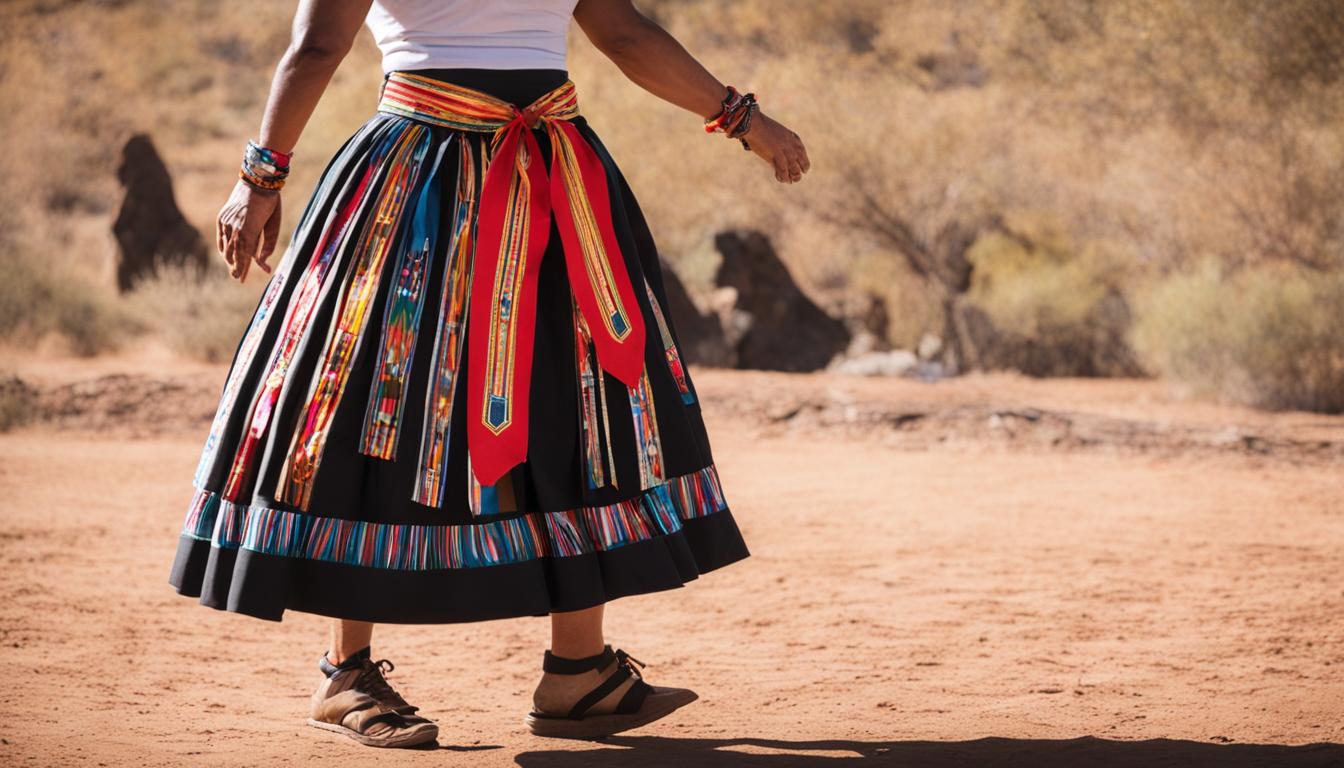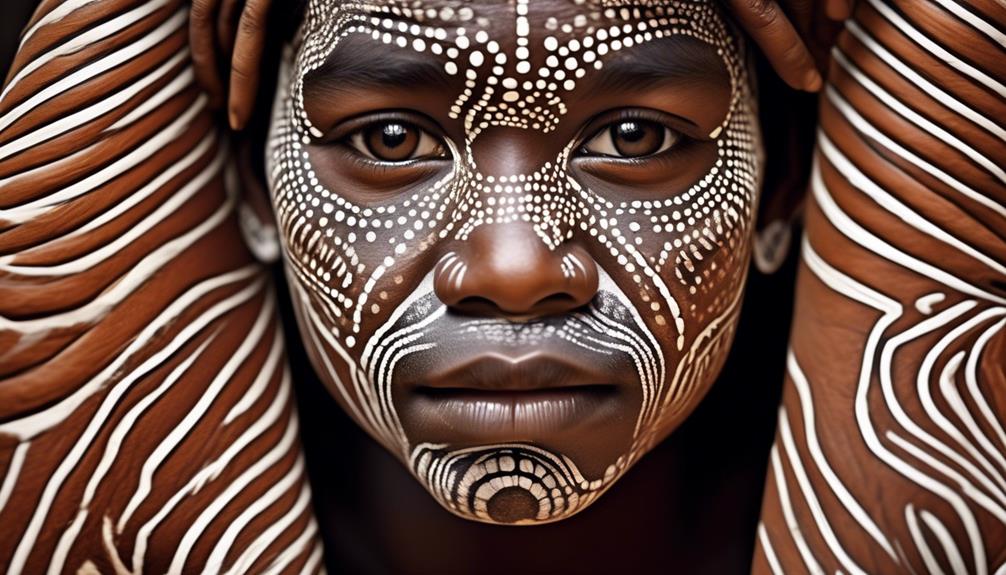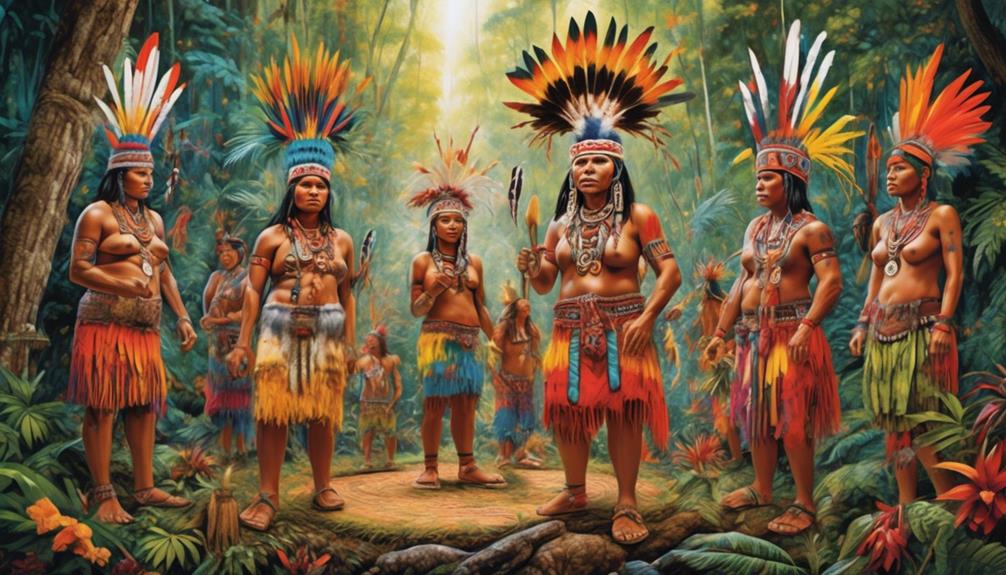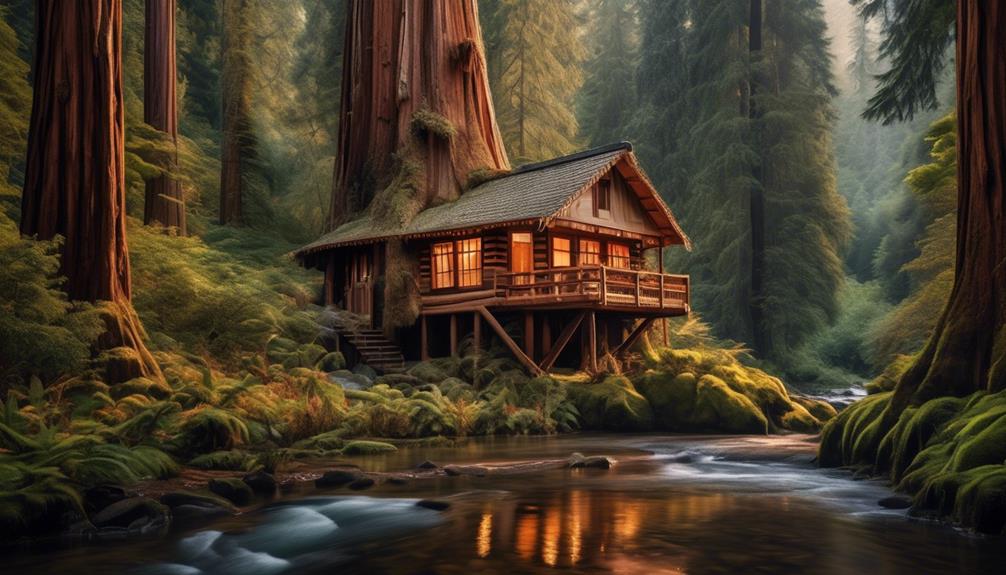Welcome to our tutorial about non-Indigenous individuals wearing ribbon skirts. National Ribbon Skirt Day is a beautiful tribute to Indigenous culture and traditions, sparking questions about the appropriateness of non-Indigenous people wearing these garments. The purpose of this guide is to provide a thoughtful and respectful perspective on this subject.
It is crucial to approach Indigenous fashion, including ribbon skirts, with cultural sensitivity and respect. Understanding the significance of these skirts and their deep-rooted symbolism is essential in order to engage with them appropriately. By being mindful of the traditions and values associated with ribbon skirts, we can contribute to a more inclusive and respectful fashion industry.
While the question of whether non-Indigenous individuals can wear ribbon skirts is complex and dependent on various factors, our guide will delve into the cultural significance of these garments, the importance of being an ally, appropriate etiquette, and the future of ribbon skirts. We aim to foster understanding, promote cultural appreciation, and encourage diversity in style.
Join us on this journey of exploring Indigenous fashion and traditions, as we learn, appreciate, and celebrate the beauty of ribbon skirts.
Key Takeaways:
- Approaching ribbon skirts with cultural sensitivity and respect is crucial.
- Understanding the cultural significance and symbolism of ribbon skirts is important before wearing them.
- Non-Indigenous individuals can wear ribbon skirts as a way to be an ally and show support for Indigenous communities.
- Seeking permission, guidance, and building relationships with Indigenous individuals or communities is essential.
- Ribbon skirts can serve as a powerful form of cross-cultural connection and celebration of diversity in style.
Ribbon Skirts: A Symbol of Indigenous Strength
Ribbon skirts hold deep cultural significance for Indigenous women, representing their culture, strength, and connection. These skirts are considered a symbol of empowerment, showcasing the resilience and identity of Indigenous communities. While non-Indigenous individuals can wear ribbon skirts, it is important to approach this act with cultural sensitivity and a deep understanding of the traditions involved.
The significance of ribbon skirts goes beyond mere fashion. They carry the stories, values, and pride of Indigenous peoples, serving as a form of expression and celebration. By wearing ribbon skirts, individuals pay homage to Indigenous traditions and honor the rich cultural heritage that these skirts represent. It is essential to respect and appreciate the depth of meaning behind each ribbon skirt.
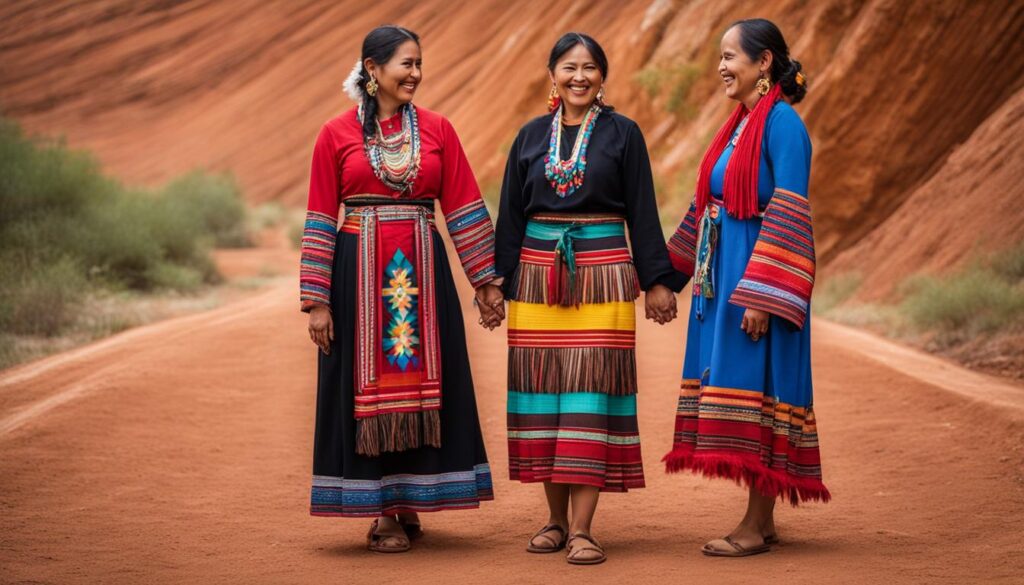
The Cultural Significance of Ribbon Skirts
Ribbon skirts are not just beautiful garments; they hold deep cultural significance within Indigenous communities. Each element of the skirt, from the colors and patterns to the materials used, carries symbolic value tied to specific stories, traditions, and teachings. They reflect the interconnectedness of Indigenous women with nature, community, and their ancestral roots.
Wearing a ribbon skirt is a way for Indigenous women to communicate their identity, strength, and resilience. These skirts are often adorned with ribbons that represent personal and communal experiences, making them unique to each individual. This fabric storytelling encapsulates the rich tapestry of Indigenous history, struggles, and triumphs.
“Ribbon skirts are a visual representation of who we are as Indigenous women, highlighting our beauty, strength, and cultural pride.” – Indigenous fashion designer, Lisa Charleyboy
Cultural Sensitivity and Respecting Indigenous Traditions
When non-Indigenous individuals choose to wear ribbon skirts, it is crucial to do so with cultural sensitivity and respect for the traditions involved. This means taking the time to learn about the significance of ribbon skirts, their creation processes, and the protocols surrounding their wearing. Engaging in cultural exchange with a genuine desire to understand and honor Indigenous traditions helps to build bridges and foster mutual respect.
Respecting Indigenous traditions also involves acknowledging the historical and ongoing struggles that Indigenous communities face. It means amplifying Indigenous voices, supporting Indigenous businesses and artists, and advocating for justice and equality. Non-Indigenous individuals can wear ribbon skirts as an expression of solidarity, but it is crucial to do so with humility and a commitment to positive change.
Embracing Ribbon Skirts with Cultural Sensitivity
Wearing a ribbon skirt as a non-Indigenous person can be an opportunity for cross-cultural connection and celebration. To embrace ribbon skirts with cultural sensitivity:
- Educate yourself on the significance of ribbon skirts within Indigenous cultures.
- Seek permission and guidance from Indigenous individuals or communities.
- Support Indigenous artisans and businesses by purchasing skirts from them.
- Respect the protocols and traditions associated with ribbon skirts, such as appropriate occasions and respectful handling.
- Avoid appropriating Indigenous symbols, designs, or motifs without proper understanding or permission.
By following these guidelines, non-Indigenous individuals can show their respect for Indigenous traditions, contribute to cultural preservation, and help create a more inclusive and respectful fashion landscape.
| Benefits of Wearing Ribbon Skirts | Guidelines for Cultural Sensitivity |
|---|---|
|
|
Understanding Cultural Appropriation
Cultural appropriation is a sensitive and important topic when it comes to wearing traditional clothing, such as ribbon skirts. It refers to the act of borrowing or adopting elements from a marginalized culture without understanding or respecting their significance. As we engage with Indigenous fashion and traditions, it is vital to avoid cultural appropriation and instead strive for cultural appreciation.
Cultural appreciation involves learning about and honoring another culture without appropriating or exploiting it. It requires a deep respect for the traditions and customs of the culture in question, recognizing their contributions and valuing their distinct heritage. By appreciating and celebrating the beauty of different cultures, we can foster understanding, unity, and inclusivity.
“Appreciation is about understanding and learning, while appropriation is the act of taking something that is not yours and using it for personal gain or for fashion trends without respecting the origin or the cultural significance behind it.”
– Indigenous Fashion Week Toronto
Non-indigenous cultural appreciation involves respectfully learning and engaging with the cultures of different communities. By educating ourselves about the cultural significance of traditional clothing, such as ribbon skirts, we can better align our actions with cultural sensitivity and respect. It is essential to approach these garments with a genuine desire to honor and preserve the traditions and legacies they represent.
Examples of Cultural Sensitivity
Cultural sensitivity is at the heart of non-indigenous cultural appreciation. Here are a few examples of how we can demonstrate cultural sensitivity when engaging with traditional clothing:
- Seek permission and guidance from Indigenous individuals or communities before wearing a ribbon skirt.
- Take the time to understand the history, meaning, and protocols associated with ribbon skirts.
- Do not alter or modify traditional clothing to fit personal preferences or fashion trends.
- Avoid using traditional clothing as costumes or for entertainment purposes.
- Respectfully engage with Indigenous cultures, their histories, and their present-day realities.
The Impact of Cultural Appropriation
Cultural appropriation can have harmful effects on marginalized communities. It perpetuates stereotypes, erases the cultural significance of traditional clothing, and commodifies sacred symbols and practices. By striving for cultural appreciation and learning about the significance of traditional garments like ribbon skirts, we can actively work towards dismantling these harmful practices and promoting a more inclusive and respectful fashion industry.
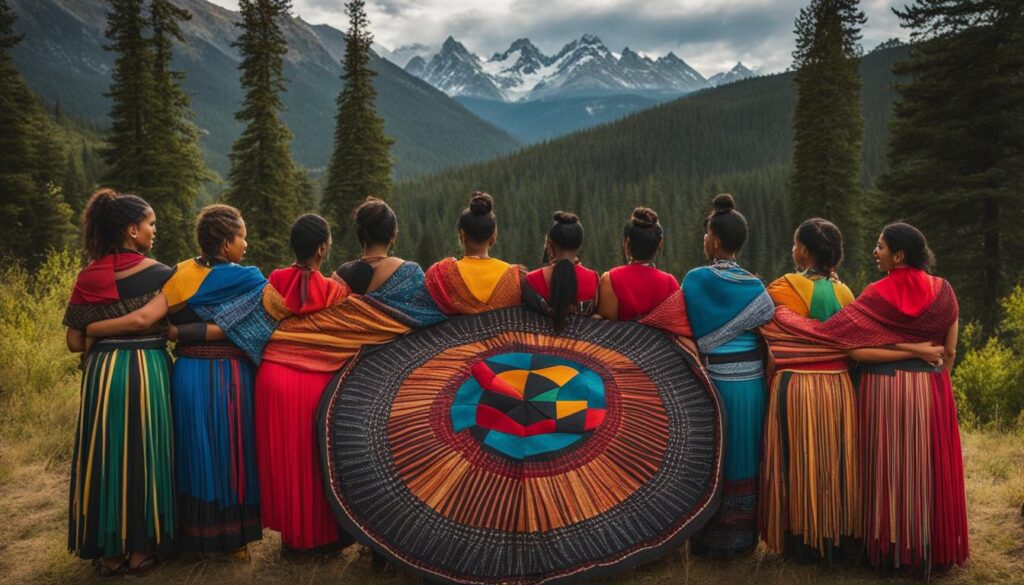
| Non-Indigenous Cultural Appropriation | Non-Indigenous Cultural Appreciation |
|---|---|
| Exploits cultural practices for personal gain | Values and respects cultural contributions |
| Misrepresents and trivializes traditions | Seeks to understand and honor traditions |
| Reinforces power imbalances and erases cultural heritage | Promotes inclusivity and recognizes cultural diversity |
| Commodifies sacred symbols and practices | Engages in respectful cultural exchange |
The Importance of Being an Ally
As non-Indigenous individuals, we have a role to play in promoting cultural sensitivity, fashion inclusivity, and diversity in the fashion industry. One way we can contribute is by wearing ribbon skirts as a form of allyship and support for Indigenous communities.
However, it is essential that we approach the act of wearing traditional clothing with the utmost respect and understanding. It goes beyond just fashion; it encompasses a commitment to advocating for Indigenous rights and the preservation of their culture.
“Fashion should be inclusive and embrace diversity in a respectful manner.”
We must recognize the importance of cultural sensitivity in our fashion choices. By wearing ribbon skirts, we have the opportunity to bridge the gap and promote inclusivity by showcasing the beauty and significance of Indigenous fashion.
Embracing Fashion Inclusivity
We believe that fashion should celebrate diversity and inclusion in all its forms. By incorporating traditional clothing like ribbon skirts into our wardrobe, we embrace fashion as a means of cross-cultural exchange and appreciation.
When we wear ribbon skirts, we send a powerful message that diversity in fashion is not only welcomed but celebrated. By embracing Indigenous fashion, we can help break down barriers and challenge the historically exclusive standards set by the industry.
Advocating for Cultural Preservation
Our commitment to wearing ribbon skirts goes beyond fashion trends. It is a way for us to show solidarity with Indigenous communities, fight against cultural appropriation, and advocate for the preservation of Indigenous cultures.
We recognize that ribbon skirts hold deep cultural significance and are rooted in rich traditions. By wearing them respectfully, we contribute to the recognition and appreciation of Indigenous heritage. This recognition is a crucial step towards ensuring that Indigenous cultures are valued, respected, and preserved for future generations.
As allies, we have the power to influence change in the fashion industry. By promoting cultural sensitivity, fashion inclusivity, and diversity, we pave the way for a more respectful and inclusive future in fashion.
Seeking Permission and Guidance
When considering wearing a ribbon skirt, it is essential to seek permission and guidance from Indigenous individuals or communities. This approach ensures that the act of wearing the skirt is done in a respectful and culturally appropriate manner. By building relationships, learning about the cultural significance of the skirt, and understanding the protocols involved, we honor and preserve traditions.
Indigenous communities hold the knowledge and understanding surrounding ribbon skirt etiquette. Engaging in respectful conversations and seeking their guidance allows us to navigate this cultural expression with sensitivity and respect. We can gain insights into the history, significance, and appropriate ways to wear a ribbon skirt, ensuring we honor and appreciate its cultural context.
By seeking permission and guidance, we acknowledge the importance of Indigenous voices and avoid perpetuating cultural appropriation. It is a step towards building mutual understanding, cross-cultural collaboration, and creating a space for the diverse traditions of Indigenous communities to be valued and respected.
The Importance of Cultural Context
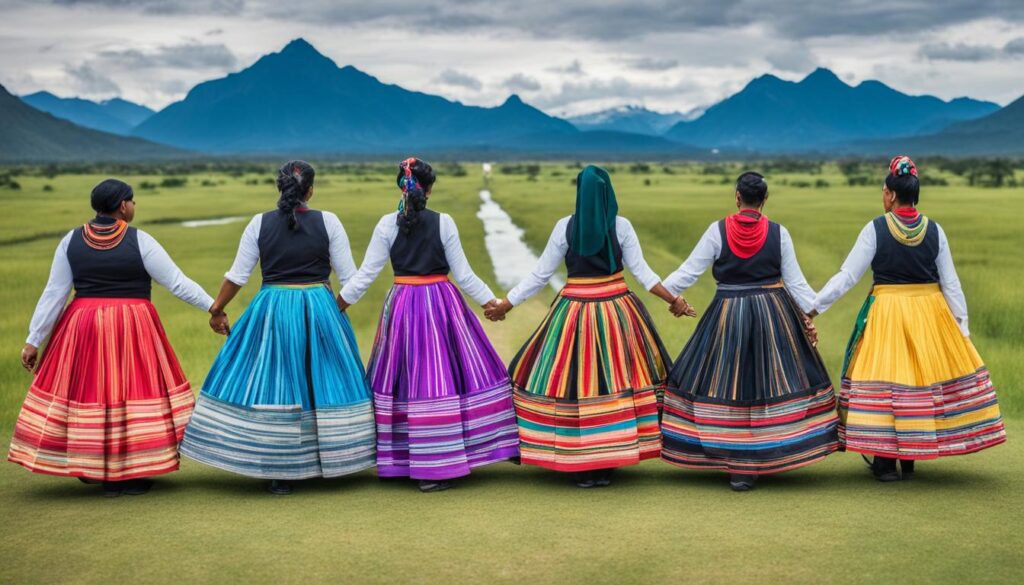
A Table Showcasing the Cultural Connections of Ribbon Skirts
| Ribbon Skirt | Cultural Connection |
|---|---|
| Indigenous | Celebration of heritage and cultural identity |
| Non-Indigenous | Respectful appreciation and embracing of diversity |
| Cross-cultural | Bridge between different traditions and cultures |
Creating Ribbon Skirts with Cultural Significance
When it comes to indigenous fashion, creating ribbon skirts with cultural significance is a powerful way to honor and celebrate Indigenous heritage and traditions. These skirts are more than just clothing; they are a symbol of identity, strength, and resilience. By incorporating elements that hold deep meaning within Indigenous communities, we can promote respectful and inclusive fashion that pays homage to the rich cultural heritage of the Indigenous people.
One of the key aspects of creating ribbon skirts with cultural significance is the careful selection of fabrics, colors, patterns, and symbols. Each of these elements carries immense significance within Indigenous cultures. Traditional fabrics like wool, cotton, and silk are often used, representing the connection to the land and the natural resources that sustain Indigenous communities.
The choice of colors is also important when creating ribbon skirts. Different colors hold specific meanings and symbolism across Indigenous cultures. For example, red can symbolize strength and power, while blue can represent spirituality and healing. By understanding the symbolism associated with each color, we can create ribbon skirts that convey the intended message and respect the cultural significance.
Patterns play a significant role in Indigenous fashion, and ribbon skirts are no exception. Geometric patterns, floral motifs, and animal symbols are commonly used in creating these skirts. Each pattern carries its own cultural significance and tells a unique story. By incorporating these patterns into the design of the skirts, we can showcase the beauty and diversity of Indigenous cultures.
Symbols also hold great importance in Indigenous fashion. They can represent a specific clan, ancestral spirits, or achievements within the community. By incorporating these symbols onto the ribbon skirts, we can further reinforce the cultural significance of the garment and honor the values and beliefs of the Indigenous people.
Creating ribbon skirts with cultural significance is a journey that requires deep respect, research, and collaboration. It is important to engage with Indigenous communities, seek guidance, and gain permission when creating and wearing these skirts. By doing so, we can ensure that our actions are rooted in cultural sensitivity and contribute to the preservation and celebration of Indigenous traditions.
The Symbolism of Colors in Ribbon Skirts
“Colors play a vital role in ribbon skirts, representing different aspects of Indigenous culture. Red symbolizes strength and power, while blue represents spirituality and healing. Yellow signifies the sun and warmth, green represents nature and growth, and black represents the unknown and mystery. By understanding and utilizing these colors, ribbon skirts can tell powerful stories and honor Indigenous traditions in a meaningful way.”
Choosing Patterns and Symbols for Ribbon Skirts
When selecting patterns and symbols for ribbon skirts, it is important to consider their cultural significance. Geometric patterns can represent balance and harmony, while floral motifs symbolize growth and beauty. Animal symbols often represent ancestral connections and spiritual significance. By thoughtfully incorporating these patterns and symbols, we can create ribbon skirts that pay homage to the diverse indigenous cultures.
Creating ribbon skirts with cultural significance allows us to embrace respectful fashion that honors Indigenous heritage. By incorporating specific fabrics, colors, patterns, and symbols, we can create garments that serve as a powerful expression of cultural pride and identity. Let’s celebrate the rich traditions of Indigenous cultures and promote inclusivity in the world of fashion.
Historical Context and Trauma
Understanding the historical context of Indigenous fashion is essential in approaching the act of wearing ribbon skirts with cultural sensitivity. Indigenous fashion is not simply a trend or a piece of clothing; it carries deep cultural significance and is rooted in a history of resilience and survival.
The history of Indigenous peoples is intertwined with profound trauma, including colonization, forced assimilation, and cultural erasure. These experiences continue to impact Indigenous communities today, shaping their relationships with their cultural practices and traditions.
Indigenous fashion is a way for us to reclaim our identity, our heritage, and our voice. It is a form of resistance against the oppressive systems that sought to erase us. When non-Indigenous individuals engage with our fashion, it is crucial that they do so with respect and understanding of the historical context and the traumas our communities have endured.
– Jazmin Smith, Indigenous Fashion Designer
By recognizing the historical context and traumas experienced by Indigenous people, non-Indigenous individuals can approach Indigenous fashion with cultural sensitivity and respect. This understanding allows for a deeper appreciation of the significance of ribbon skirts and the importance of preserving Indigenous traditions.
| Historical Context | Trauma |
|---|---|
| Indigenous communities have a rich history of traditional clothing and cultural practices that span thousands of years. | Colonialism and forced assimilation led to the suppression and destruction of Indigenous cultures, including their traditional clothing. |
| Indigenous fashion is a way for communities to reclaim and celebrate their cultural identity. | Historical trauma continues to impact Indigenous communities, influencing their relationships with their cultural practices. |
| Wearing ribbon skirts is a powerful act of resilience and resistance, honoring the strength and survival of Indigenous peoples. | The trauma experienced by Indigenous people has created a need for cultural preservation and protection of traditions. |

The historical context of Indigenous fashion shapes its significance, and understanding this context enables non-Indigenous individuals to engage with cultural respect and sensitivity. By recognizing the trauma endured by Indigenous communities, we can approach the act of wearing ribbon skirts as a form of cultural exchange that honors the resilience and strength of Indigenous peoples.
Celebrating Indigenous Women
Ribbon skirts hold a deep cultural significance for Indigenous women, representing their resilience, strength, and connection to their culture. By wearing ribbon skirts, non-Indigenous individuals can contribute to honoring and highlighting the contributions and experiences of Indigenous women, showing respect for their cultural heritage.
Indigenous fashion is a way to pay homage to the traditions and stories of Indigenous communities. By embracing cross-cultural fashion, we can celebrate diversity, promote inclusivity, and foster a greater understanding of different cultures.
“Wearing a ribbon skirt as a non-Indigenous person is a way to show appreciation for Indigenous culture and support the empowerment of Indigenous women,” says Maya Thompson-Webb, a fashion designer known for her contemporary Indigenous designs.
Wearing a ribbon skirt is not just about fashion, it is about honoring the legacies of Indigenous women and their ongoing contributions to society. It is a symbol of unity and respect, bridging cultures and promoting understanding. Each ribbon on the skirt tells a story, and by wearing it with reverence, we honor those stories and the women who shared them.
Highlighting Indigenous Women’s Voices
Indigenous women have played a pivotal role in preserving and promoting their cultural traditions through art, music, and fashion. By celebrating Indigenous fashion and wearing ribbon skirts, we can amplify their voices and experiences, bringing attention to the resilience, creativity, and beauty within Indigenous communities.
Ribbon skirts serve as a form of cultural expression and a way to pay homage to the past, present, and future of Indigenous women. By embracing cross-cultural fashion and honoring Indigenous traditions, we can create a more inclusive and diverse fashion industry that respects and values the contributions of all cultures.
Indigenous Women Showcase Their Designs
| Designer | Indigenous Heritage | Design Style |
|---|---|---|
| Angel Chen | Chinese-Miao descent | Modern reinterpretation of traditional Chinese clothing |
| Bethany Yellowtail | Crow and Nothern Cheyenne | Contemporary Native American designs |
| Ji-Won Choi | Korean | Mixing traditional Korean elements with modern fashion |
These designers, among many others, showcase the diversity and creativity of Indigenous women in the fashion industry. Their work not only celebrates their culture and traditions, but also serves as a representation of their strength and resilience, challenging stereotypes and breaking barriers.
By supporting and appreciating the designs of Indigenous women, we can contribute to a more inclusive fashion industry that honors traditions, respects diverse cultures, and promotes cross-cultural connections.
Guidelines for Wearing Ribbon Skirts
When wearing a ribbon skirt, it is important to follow guidelines of cultural sensitivity and respect. To ensure that our actions are respectful and contribute to cultural preservation, we must understand and adhere to appropriate protocols, seek permission when necessary, avoid cultural appropriation, and treat the skirt with the reverence it deserves.
One of the most important aspects of ribbon skirt etiquette is seeking permission from Indigenous individuals or communities before wearing a skirt. This shows respect for their cultural traditions and allows for a deeper understanding of the significance of the skirt.
In addition, it is crucial to avoid cultural appropriation when wearing a ribbon skirt. This means recognizing that the skirt holds deep cultural meaning and should not be treated as a fashion trend or costume. Instead, we should approach the skirt with a mindset of cultural sensitivity and appreciate its significance.
“Wearing a ribbon skirt is not just about fashion; it is about honoring traditions and showing respect for Indigenous cultures.”
Treating the ribbon skirt with the reverence it deserves means handling it with care and ensuring that it is worn appropriately. Each ribbon skirt may have specific customs or protocols associated with it, and it is important to learn about and adhere to these guidelines.
By following these guidelines for wearing ribbon skirts, we can demonstrate our commitment to respectful fashion and cultural sensitivity. Respectful fashion embraces diversity and celebrates the richness of different cultures, without appropriating or exploiting their traditions.
Educating Others on Ribbon Skirts
As non-Indigenous individuals, we have the power to educate and spread awareness about the significance and cultural context of ribbon skirts. By using our platform, whether it’s through social media, conversations, or public events, we can foster a greater understanding and appreciation for Indigenous fashion and traditions. It is our responsibility to promote cultural sensitivity and embrace diversity in style.
When educating others, consider the following:
- Share the history and cultural significance of ribbon skirts, highlighting their importance in Indigenous communities.
- Discuss the traditional materials, patterns, and symbols used in ribbon skirts, showcasing their richness and diversity.
- Emphasize the need for cultural sensitivity and respect when engaging with Indigenous fashion, encouraging others to approach it with an open mind and a willingness to learn.
- Highlight the importance of supporting Indigenous artisans, designers, and brands that promote authentic representation and empowerment.
“By educating others about ribbon skirts, we contribute to a more inclusive and respectful fashion industry, where Indigenous fashion and traditions are celebrated and honored.”
Through education, we can challenge misconceptions, break down stereotypes, and promote cross-cultural understanding. Let’s come together to create a fashion landscape that embraces diversity in style and respects the cultural heritage of Indigenous communities.
Ribbon Skirts as a Form of Empowerment
Ribbon skirts hold deep cultural and personal significance for Indigenous women. They are not just garments; they are a powerful symbol of identity, resilience, and cultural heritage. By wearing these skirts, non-Indigenous individuals can contribute to the empowerment of Indigenous communities and help combat the erasure of Indigenous cultures.
When we wear a ribbon skirt, we honor the traditions and ancestral knowledge that have been passed down through generations. It is a way to connect with Indigenous fashion and demonstrate our respect and appreciation for their rich cultural heritage.
“Ribbon skirts are a reminder of our strength as women and our connection to our ancestors. When we wear them, we carry their stories with us and continue the legacy of Indigenous traditions.” – Jennifer Johnson, Indigenous Fashion Designer
By embracing ribbon skirts and other forms of Indigenous fashion, we actively participate in promoting a more inclusive and respectful fashion industry. Our choices can serve as a powerful statement of solidarity, amplifying Indigenous voices and experiences.
It is essential to approach the act of wearing a ribbon skirt with respect, understanding, and cultural sensitivity. We should educate ourselves about the significance of ribbon skirts, seek guidance from Indigenous individuals or communities, and adhere to any protocols associated with their wear.
The Empowerment of Indigenous Women
A ribbon skirt is more than just a piece of clothing; it represents the cultural pride and resilience of Indigenous women. By wearing these skirts, we acknowledge their contributions and celebrate their strength. This act of recognition can help combat the erasure of Indigenous cultures and contribute to a more inclusive society.
When we wear ribbon skirts with respect and understanding, we create an opportunity for cultural exchange and foster connections between different communities. It is through these connections that we can build a more diverse and culturally rich world.
Ribbon skirts are a celebration of Indigenous traditions, and by wearing them, we become advocates for respectful and inclusive fashion. Our choices can have a profound impact on the preservation and promotion of Indigenous cultures, ensuring that these traditions continue to thrive for generations to come.
Unity and Kinship Through Ribbon Skirts
Ribbon skirts have the incredible power to unite individuals from diverse cultures and foster a sense of kinship. By embracing diversity in style and celebrating Indigenous fashion, we can facilitate meaningful connections, cultivate understanding, and promote mutual respect.
When we wear ribbon skirts, we not only honor the traditions of Indigenous communities but also acknowledge the beauty that lies in our differences. These skirts serve as a symbol of inclusivity and cultural exchange, allowing us to express our appreciation for the rich tapestry of global fashion.
Just as each ribbon on the skirt holds its own significance, representing different stories and experiences, our collective embrace of indigenous fashion underscores our commitment to cultural sensitivity and respect. In the act of wearing ribbon skirts, we come together, finding common ground and building bridges across cultures.
This image captures the essence of unity and kinship that ribbon skirts can inspire. The vibrant colors and flowing ribbons represent the diversity of cultures, intertwining to create a tapestry of togetherness.
Ribbon skirts encourage us to view fashion as more than just a form of self-expression; they invite us to appreciate the historical and cultural context from which these garments emerge. Through our collective embrace of indigenous fashion, we create a space where everyone’s stories and traditions can be seen, celebrated, and respected.
As we continue to champion embracing diversity in style, let us wear ribbon skirts as a testament to our commitment to cultural sensitivity and inclusivity. Together, we can weave a fabric of unity, fostering connections and promoting a world where every culture is celebrated and cherished.
Affirming Quotes
“When we embrace indigenous fashion and wear ribbon skirts, we are not just wearing a piece of clothing – we are embodying a spirit of unity that transcends cultural borders.” – Marissa Johnson, Fashion Enthusiast
“Ribbon skirts represent the threads that connect us all, reminding us of the importance of celebrating diversity and fostering cultural understanding. Each ribbon holds unique stories, bound together in a harmonious tapestry of humanity.” – Alejandro Santos, Cross-Cultural Advocate
Unity and Kinship Through Ribbon Skirts – A Comparative Analysis
| Unity | Kinship |
|---|---|
| Embracing diversity in style | Cultivating understanding and respect |
| Fostering connections | Creating a sense of belonging |
| Promoting inclusivity in the fashion industry | Building bridges across cultures |
| Celebrating our differences | Weaving a fabric of unity |
The Future of Ribbon Skirts
In the next 20 years, the future of indigenous fashion will see a resurgence of ribbon skirts as more Indigenous people reclaim and celebrate their cultural heritage through fashion. This shift represents a powerful statement of cultural pride and identity. As a society, it is crucial that we support this process by fostering cultural sensitivity, embracing diversity in style, and promoting inclusivity within the fashion industry.
By respecting and appreciating indigenous fashion, we can contribute to the preservation and promotion of diverse cultural traditions. Cultural sensitivity means understanding and honoring the significance of ribbon skirts and refraining from appropriating or exploiting them.
In the fashion industry, embracing diversity goes beyond mere representation. It involves creating spaces that value and uplift diverse voices and experiences. Indigenous fashion, including ribbon skirts, should be celebrated and integrated into mainstream fashion in a respectful and inclusive manner.
“Indigenous fashion represents a vibrant tapestry of history, resilience, and creativity that should be both acknowledged and respected by all.” – Indigenous Fashion Council
Encouraging Cultural Exchange
The future of ribbon skirts also holds the potential for cross-cultural exchange and unity. By embracing diversity in style and celebrating indigenous fashion, individuals from different backgrounds can foster connections, understanding, and mutual respect. Ribbon skirts can serve as a bridge that brings communities together, promoting inclusivity and cultural exchange.
We have an opportunity to learn from Indigenous communities, to appreciate their artistic expressions, and to incorporate elements of their traditional clothing into contemporary fashion. This collaboration can result in innovative and culturally rich designs that highlight the beauty and diversity of indigenous fashion.
Amplifying Indigenous Voices
The future of ribbon skirts is closely intertwined with the amplification of Indigenous voices. By wearing these skirts with respect and understanding, non-Indigenous individuals can contribute to the empowerment and visibility of Indigenous communities. It is crucial to acknowledge the historical context of Indigenous fashion, including the traumas experienced by Indigenous people, and work towards equity and justice.
Through education and advocacy, we can help create a more inclusive fashion industry that recognizes and celebrates the contributions of Indigenous designers, artisans, and models. Indigenous fashion should not be exoticized or commodified but rather embraced and celebrated for its unique cultural significance and artistic expression.
Embracing the Future of Indigenous Fashion
| Actions | Impact |
|---|---|
| Respecting and embracing Indigenous fashion | Fosters cultural preservation and authenticity |
| Promoting cultural sensitivity | Ensures appropriation-free engagement with indigenous traditions |
| Encouraging diversity and inclusion | Celebrates uniqueness and fosters representation |
| Supporting Indigenous designers and artisans | Empowers and amplifies Indigenous voices |
| Collaborating for cross-cultural exchange | Promotes unity and understanding |
To build a more inclusive future, we must actively engage with and learn from the cultural traditions and expressions of Indigenous communities. By embracing diversity in style, promoting cultural sensitivity, and supporting Indigenous fashion, we can create a fashion industry that is truly reflective of the rich tapestry of our society.
Conclusion
The question of whether non-Indigenous individuals can wear ribbon skirts is a nuanced one, influenced by cultural sensitivity, respect, and understanding. It is crucial to approach the act of wearing ribbon skirts with the right intentions and a commitment to learning, appreciating, and amplifying Indigenous voices. By doing so, we can contribute to a more inclusive and respectful fashion industry that embraces diversity in style.
Understanding the significance of ribbon skirts and the importance of honoring traditions is essential in avoiding cultural appropriation and promoting respectful fashion. Seeking permission and guidance from Indigenous individuals or communities before wearing a ribbon skirt demonstrates the willingness to respect and learn about Indigenous cultures. By building relationships and understanding the cultural protocols involved, we can ensure that the act of wearing a ribbon skirt is done in a culturally appropriate manner.
Non-Indigenous individuals can play a crucial role as allies by educating others on the significance and cultural context of ribbon skirts. By using our platform to spread awareness and promote cultural sensitivity, we can foster mutual understanding and appreciation for Indigenous fashion and traditions. The future of ribbon skirts lies in supporting Indigenous people reclaiming and celebrating their cultural heritage through fashion, while promoting inclusivity, diversity, and respect in the fashion industry as a whole.
FAQ
Can non-Indigenous people wear ribbon skirts?
The appropriateness of non-Indigenous people wearing ribbon skirts depends on their intention and understanding of the significance. It is important to be an ally and respect Indigenous traditions and expressions of culture.
What is the significance of ribbon skirts?
Ribbon skirts are worn by Indigenous women to celebrate their culture, strength, and connection. These skirts hold significant meaning and are considered a symbol of empowerment.
What is cultural appropriation?
Cultural appropriation occurs when elements from a marginalized culture are borrowed or adopted by a dominant culture without proper understanding or respect. It is important to avoid cultural appropriation when wearing traditional clothing such as ribbon skirts.
How can non-Indigenous individuals be allies?
Non-Indigenous individuals can be allies by approaching the act of wearing ribbon skirts with respect, understanding, and a commitment to advocating for Indigenous rights and cultural preservation. Fashion should be inclusive and embrace diversity in a respectful manner.
Should I seek permission before wearing a ribbon skirt?
Yes, it is important to seek permission and guidance from Indigenous individuals or communities before wearing a ribbon skirt. This ensures that the act of wearing the skirt is done in a respectful and culturally appropriate manner.
How can ribbon skirts promote cultural connection?
Ribbon skirts can serve as a way for individuals, both Indigenous and non-Indigenous, to connect with their cultural heritage and foster cross-cultural understanding. By wearing and appreciating traditional clothing, people can embrace diversity in style and celebrate the richness of different cultures.
How can I create a ribbon skirt with cultural significance?
Creating ribbon skirts with cultural significance involves incorporating elements that represent Indigenous heritage and traditions. This can include using specific fabrics, colors, patterns, and symbols that hold meaning within Indigenous communities. By creating and wearing these skirts in a respectful manner, individuals can promote respectful and inclusive fashion.
What is the historical context of ribbon skirts?
Understanding the historical context of Indigenous fashion, including the traumas experienced by Indigenous people, is crucial in approaching the act of wearing ribbon skirts respectfully. Indigenous fashion is more than just a trend or a piece of clothing; it carries deep cultural significance and is intertwined with a history of resilience and survival.
How can wearing ribbon skirts honor Indigenous women?
Ribbon skirts are often worn by Indigenous women to celebrate their culture, strength, and resilience. By wearing ribbon skirts as a non-Indigenous person, individuals can contribute to honoring and highlighting the contributions and experiences of Indigenous women. This serves as a form of recognition and appreciation for their cultural heritage.
What are the guidelines for wearing ribbon skirts?
When wearing a ribbon skirt, it is important to follow guidelines of cultural sensitivity and respect. This includes understanding and adhering to appropriate protocols, seeking permission when necessary, avoiding cultural appropriation, and treating the skirt with the reverence it deserves. By doing so, individuals can ensure that their actions are respectful and contribute to cultural preservation.
How can I educate others about ribbon skirts?
Non-Indigenous individuals who choose to wear ribbon skirts can play an important role in educating others on the significance and cultural context of these garments. By using their platform to spread awareness and promote cultural sensitivity, individuals can foster a greater understanding and appreciation for Indigenous fashion and traditions.
How do ribbon skirts empower Indigenous communities?
Ribbon skirts hold deep cultural and personal significance for Indigenous women. By wearing these skirts, non-Indigenous individuals can contribute to the empowerment of Indigenous communities and help combat the erasure of Indigenous cultures. It is important to approach the act of wearing a ribbon skirt with respect, understanding, and a commitment to amplifying Indigenous voices and experiences.
How can ribbon skirts foster unity and kinship?
Ribbon skirts can serve as a symbol of unity and kinship among individuals from different cultures. By embracing diversity in style and celebrating Indigenous fashion, people can foster connections, understanding, and mutual respect. Ribbon skirts can be a powerful tool for promoting inclusivity and cultural exchange.
What does the future hold for ribbon skirts?
In the next 20 years, the future of ribbon skirts involves more Indigenous people reclaiming and celebrating their cultural heritage through fashion. As a society, we can support this process by respecting and embracing Indigenous fashion, promoting cultural sensitivity, and encouraging diversity and inclusion in the fashion industry. Ribbon skirts will continue to evolve and serve as a powerful expression of cultural pride and identity.
